
The second annual Vitality in America study shows overall vitality levels remained stable over the past year. U.S. adults report an average vitality score of 67.2 out of 100 in 2023 (vs. 67.4 in 2022). American adults report struggling with their physical, emotional, and financial health and well-being more this year than last year. However, the new study found that optimism is up year over year. In fact, 47% of U.S. adults report they look forward to each day (up from 43% last year) and 41% report feeling alive and vital (compared to 39% last year).
These are just two insights from the new report, which is based on a survey of 10,000 adults conducted by Morning Consult and commissioned by The Cigna Group. The survey uses the Evernorth Vitality Index to understand the capacity of U.S. adults to pursue life with health, strength, and energy.
While overall vitality levels are stable, digging deeper into the various dimensions of health uncovers some interesting changes from last year. Let’s look at some of the key findings.
While many people struggle with physical, emotional, and financial well-being, those with healthy habits have higher vitality
The research shows significant downward shifts in the physical, emotional, and financial dimensions of health. U.S. adults saw a seven percentage point decline in feeling they can support themselves financially, which points to a sense of financial insecurity.
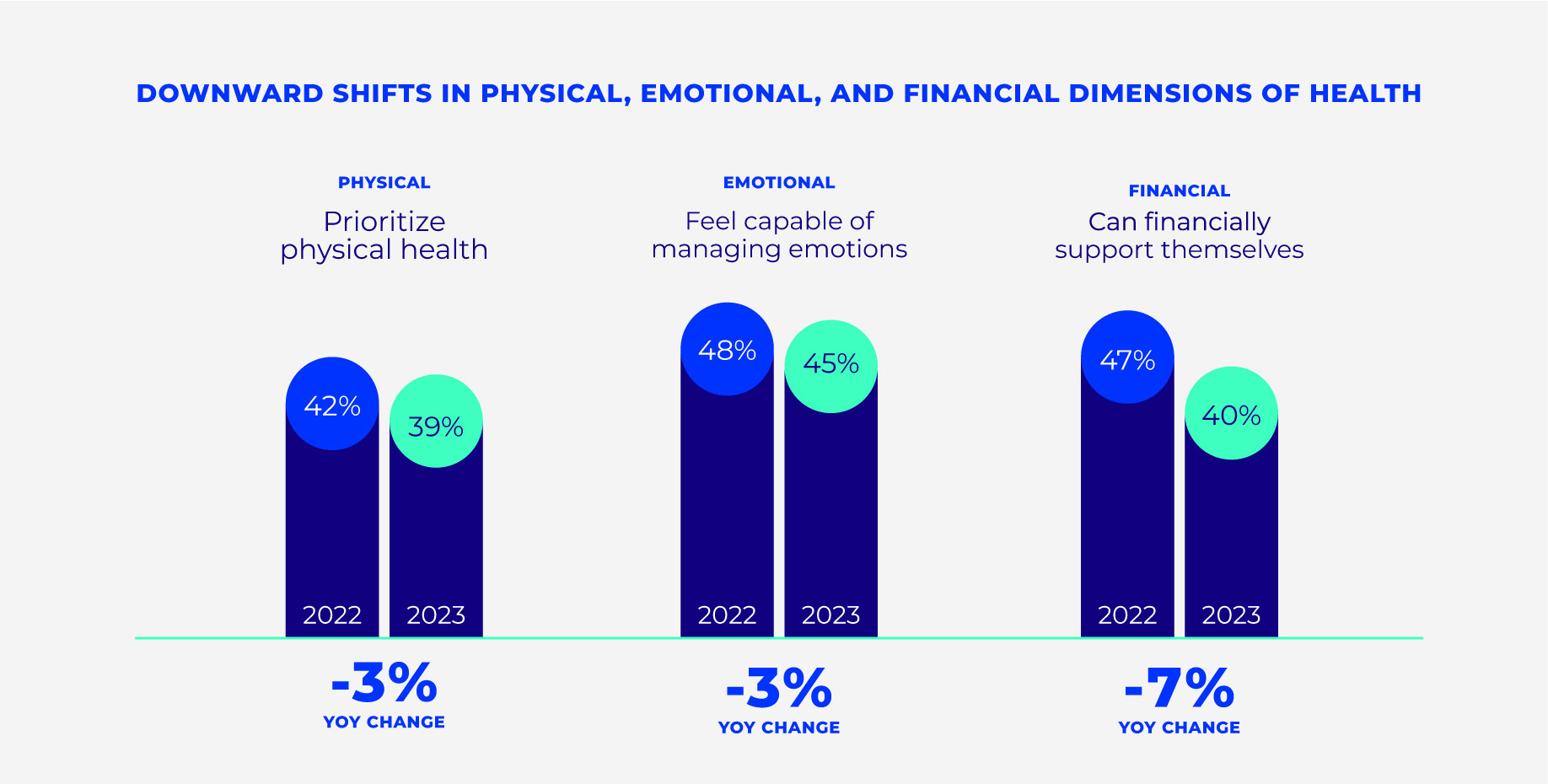
The 18% of adults with high vitality report healthier habits and higher health engagement than their low vitality counterparts. As we found last year, adults with high vitality are more likely to report excellent or very good overall physical health than those with low vitality. A significant majority of high vitality adults – 92% – report getting at least five hours of sleep per day and 77% report feeling well-rested. The majority also tend to eat healthier and exercise.
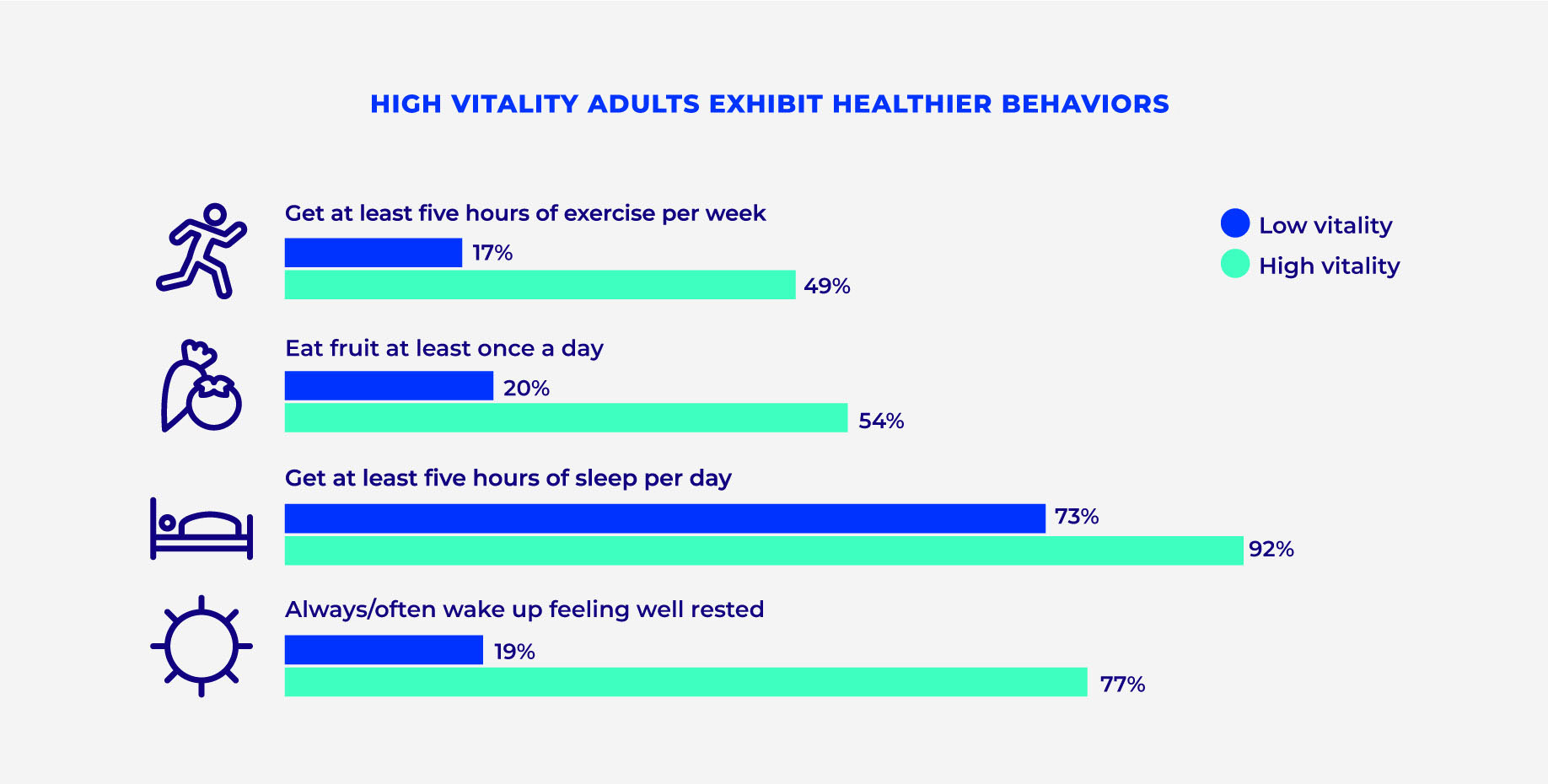
This engagement and investment in their health likely impacts the prevalence of chronic conditions, with nearly 2 in 5 high vitality adults reporting they do not have a chronic condition, while less than 1 in 5 low vitality adults can say the same.
Mental and emotional health significantly impact vitality
Adults with strong mental health are 10 times more likely to have high vitality than those with fair or poor mental health. Adults with low vitality who report struggling with their mental health are more likely to experience a lack of motivation and enthusiasm. They also report feeling like they don’t have anything to look forward to and often find themselves getting agitated. Regardless of vitality levels, however, stress is an everyday part of life for many adults in the U.S., who report feeling most stressed about their finances, followed by their housing conditions, work, family or social relationships, and health.
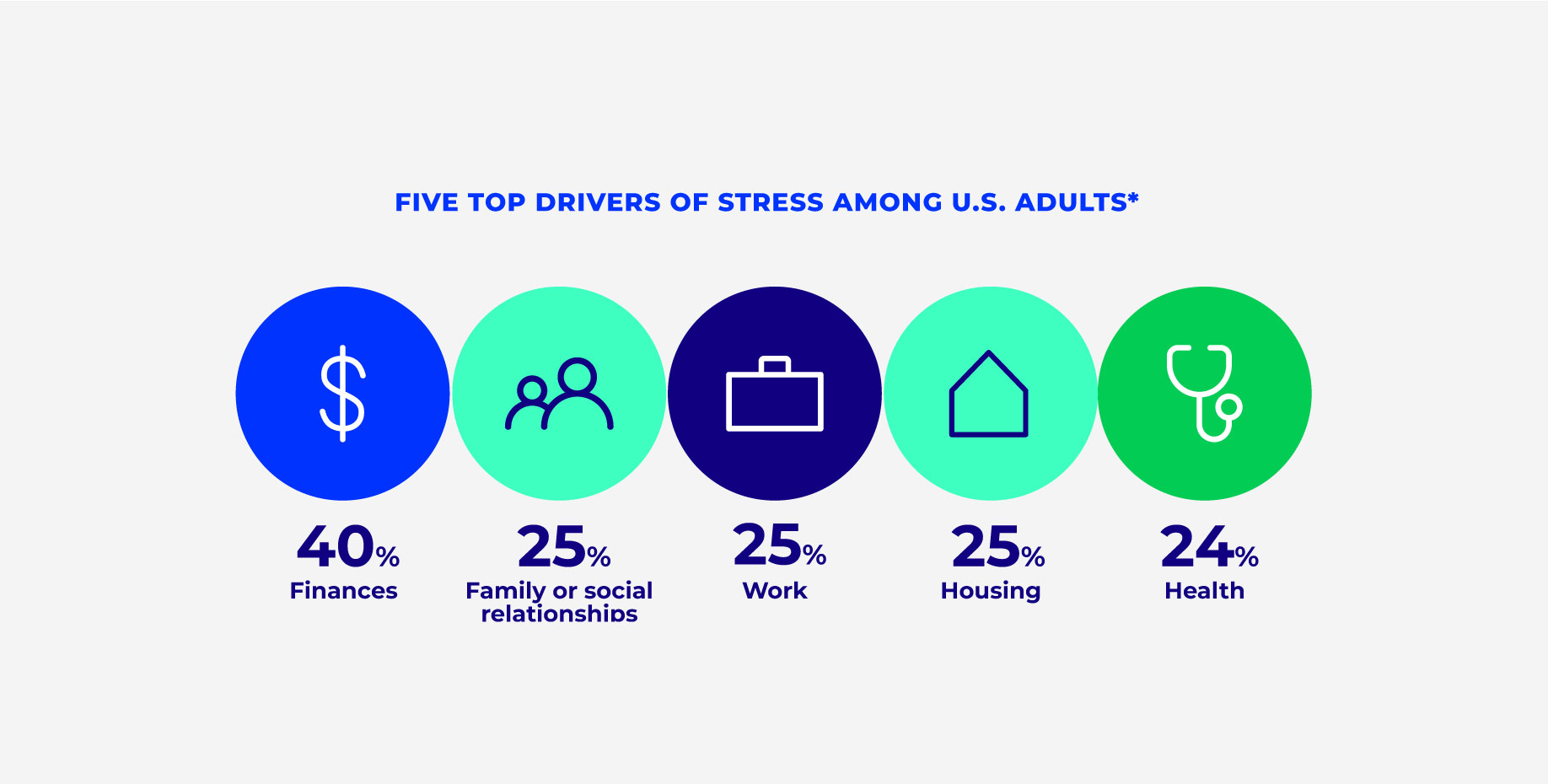 *Study participants reported experiencing stress in these areas “often” or “very often.”
*Study participants reported experiencing stress in these areas “often” or “very often.”
High vitality adults with chronic conditions are more satisfied with their lives than their low vitality counterparts
The research looked at adults living with cancer or depression/anxiety and found that those with high vitality exhibit healthier behaviors than their low vitality counterparts. They spend less time on screens, get more exercise, and are more likely to have a good relationship with their health care provider. They also have higher resilience, a better support system, and generally feel more in control of their future health.
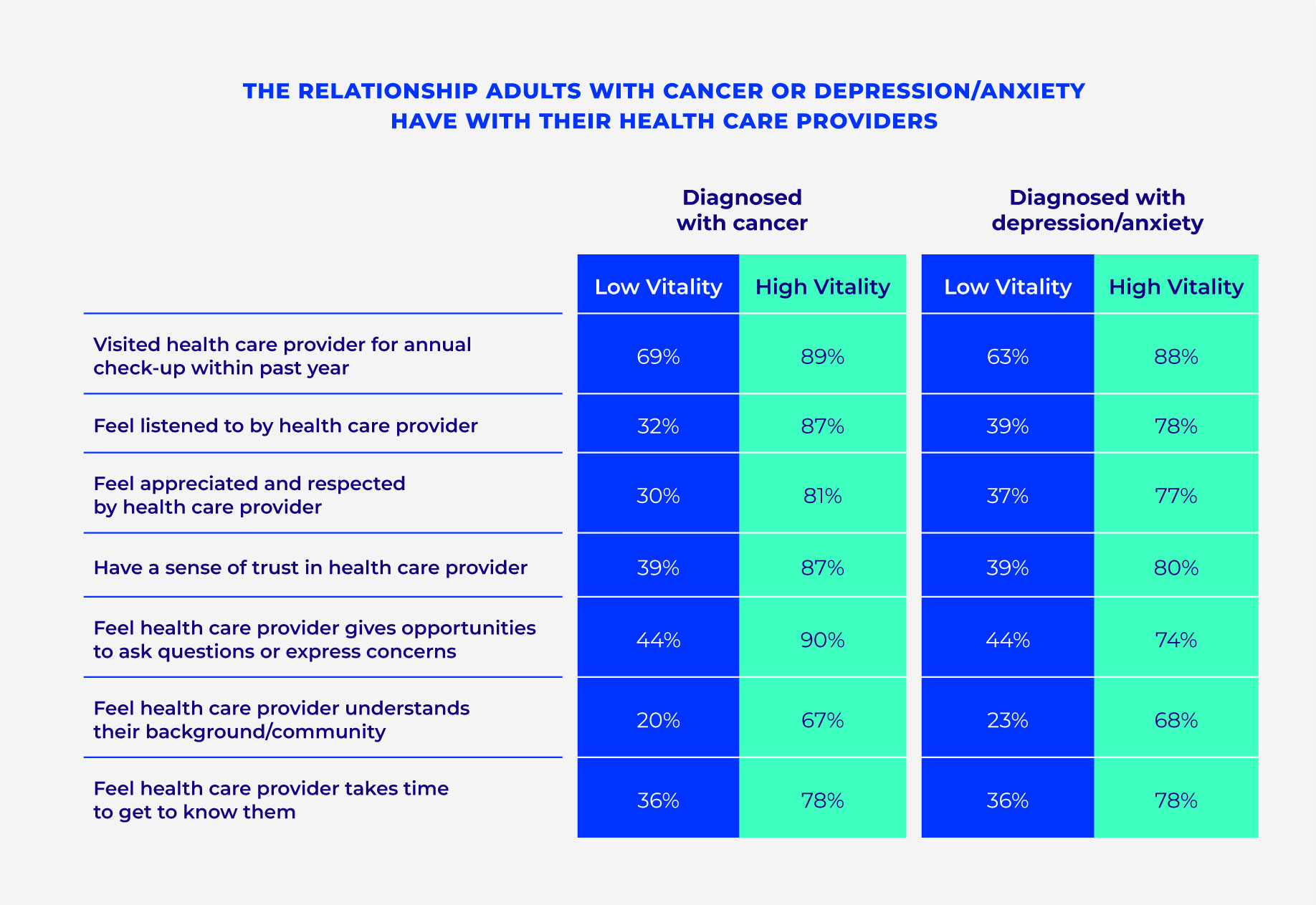
Workers with high vitality perform better
Workers with high vitality are more likely than those with low vitality to enjoy their work and pursue work tasks that interest them. They feel more capable, energetic, and enthusiastic at work, are confident they can do their jobs well, and feel alive and vital while working. They also are more likely to perform well on the job. Perhaps because of this, people with high vitality are more likely than those with low vitality to have growth opportunities within their organizations, are more enthusiastic about the organization they work for, and are more willing to work harder to help their workplace succeed. This data highlights the value of creating an environment that cultivates high vitality workers and the importance of retaining them.
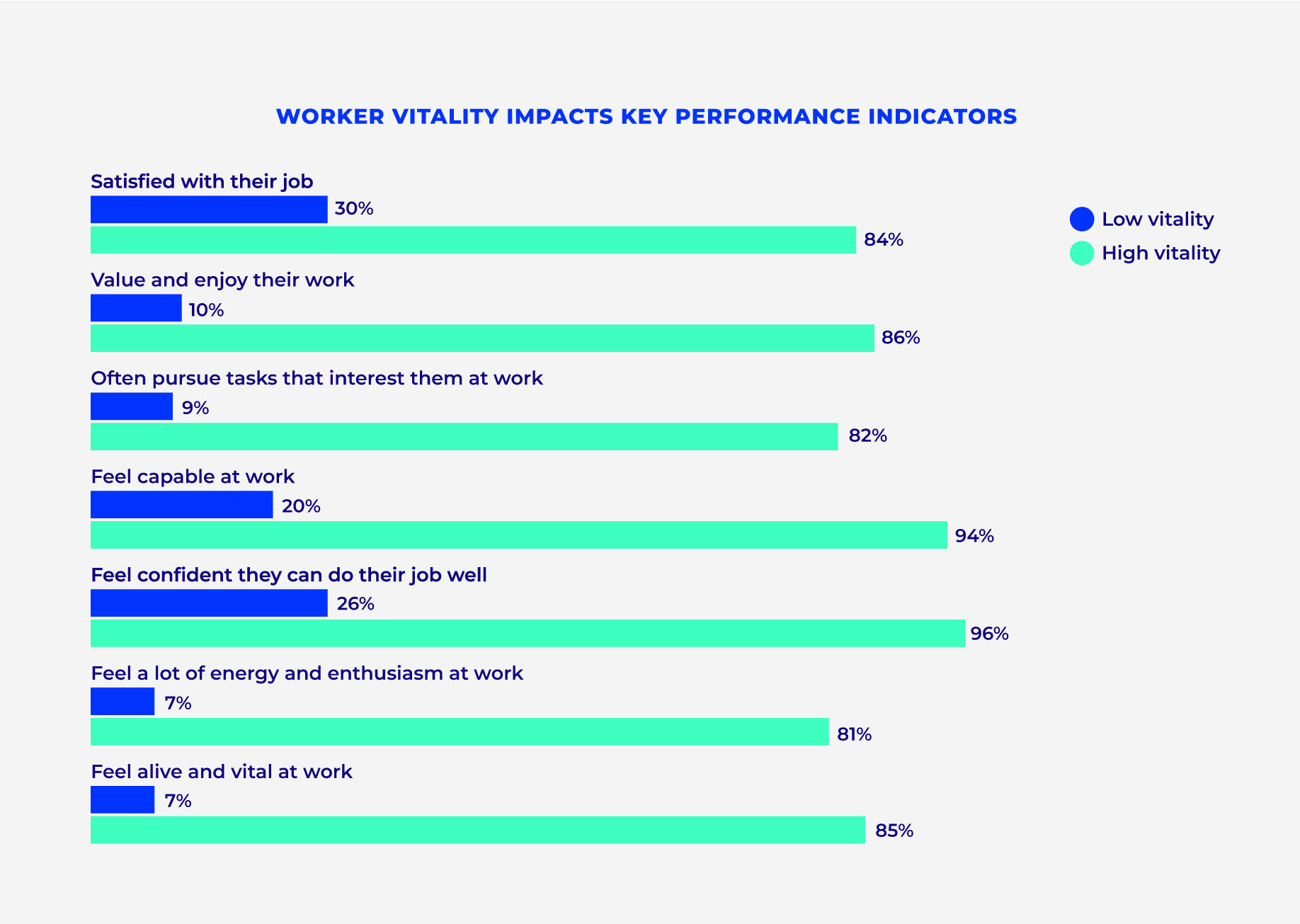
Some historically low vitality groups feel more alive and vital in 2023, while vitality among men and among all white adults trends downward
2023 data shows that members of the Gen Z and LGBTQ+ communities are feeling more alive and more optimistic than in 2022. In addition, they are not experiencing the same level of decline in resilience or the uptick in loneliness year over year as other populations. Data shows year over year increases in loneliness for heterosexual adults, while LGBTQ+ adults remain stable.
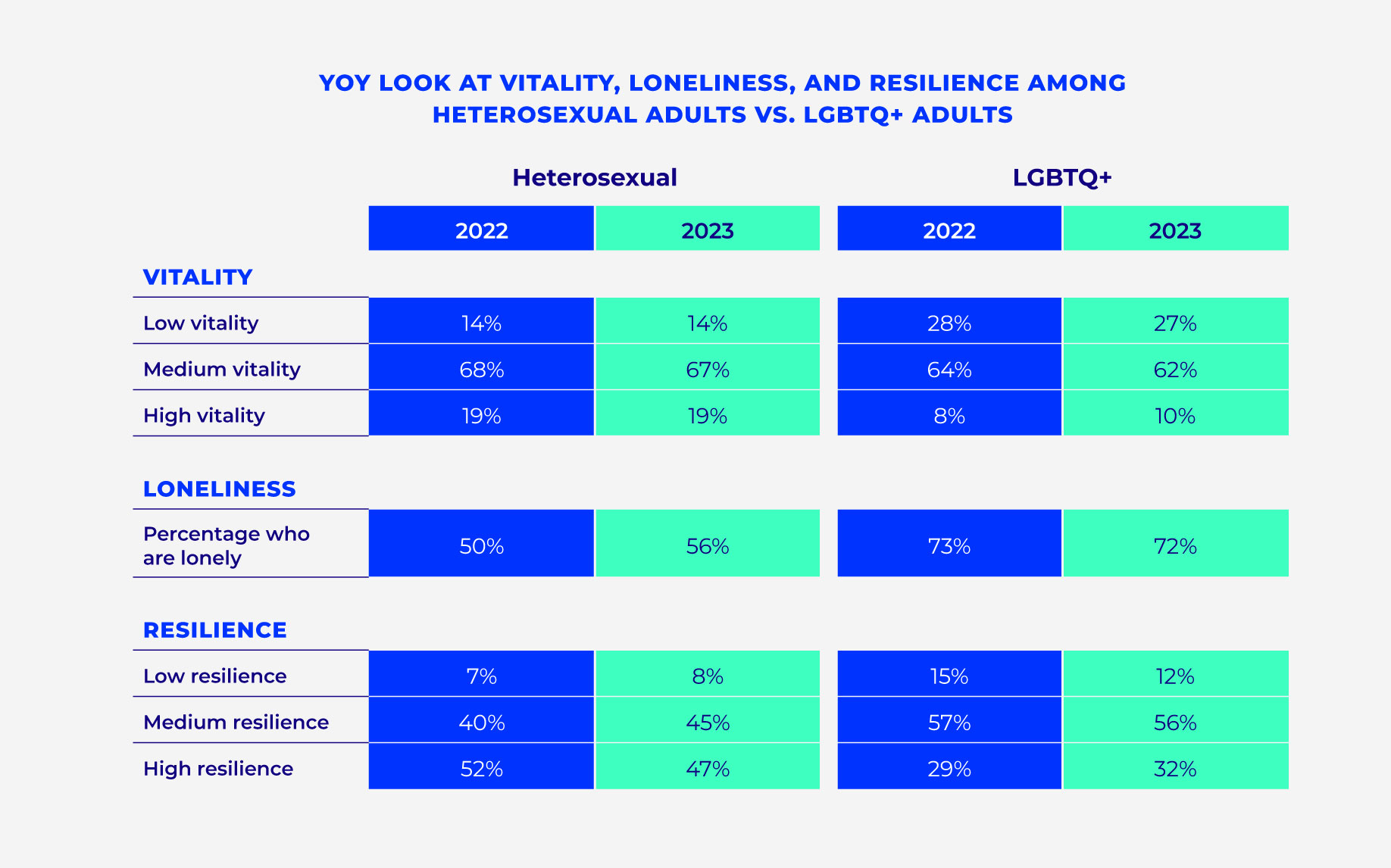
Vitality levels are consistent between genders compared to 2022, with men having slightly higher vitality than women. However, women are feeling more vital and are more likely to look forward to each day than in 2022, despite being twice as likely to suffer clinical depression as men (a significant increase since 2022). Meanwhile, men are seeing a small decline in their vitality and are seeking ways to help improve it.
For white adults, vitality is trending downward, resilience is declining, and they are significantly more likely to say they are lonely. Conversely, Black adults have higher vitality and are less lonely than in 2022. They report higher average vitality than whites or Hispanics.
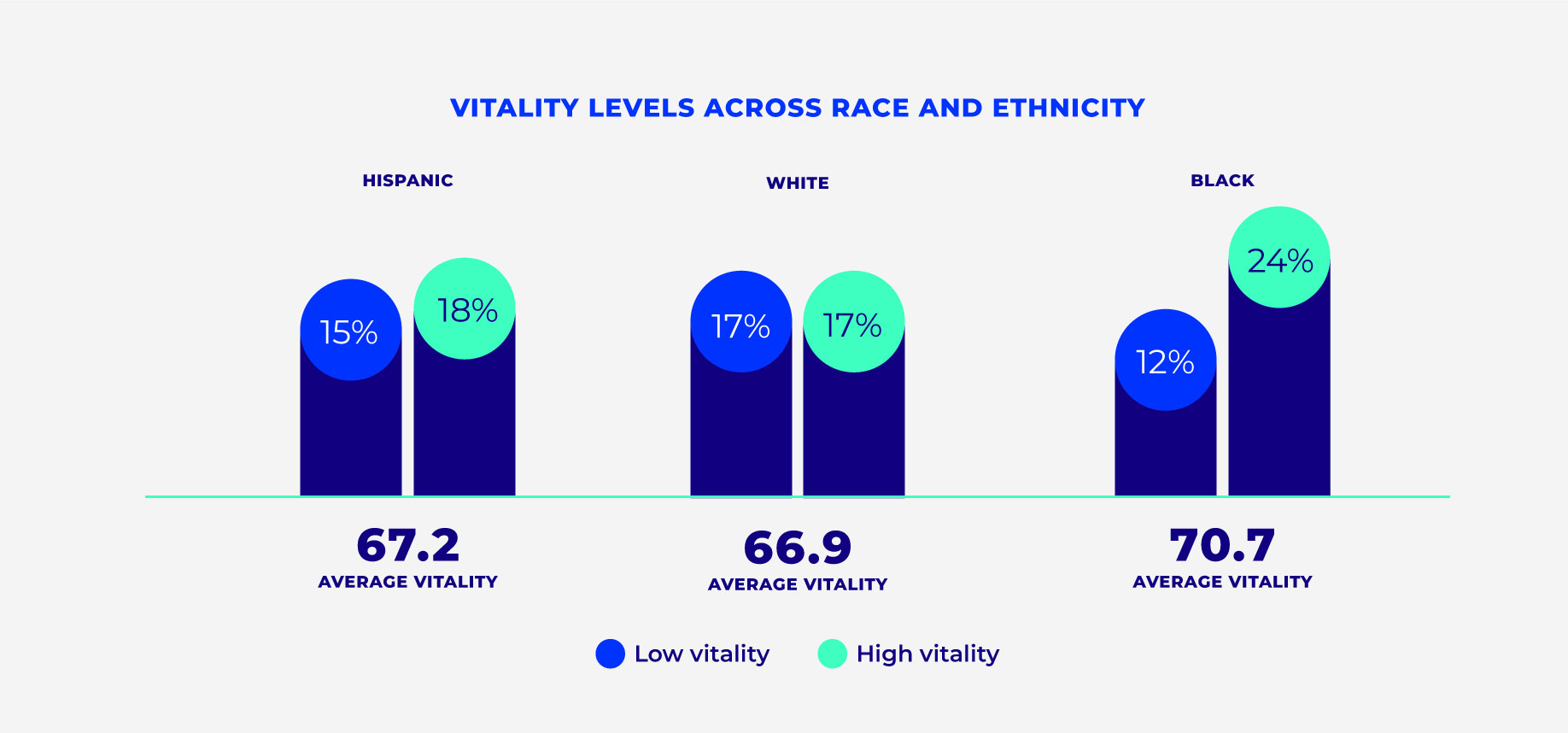
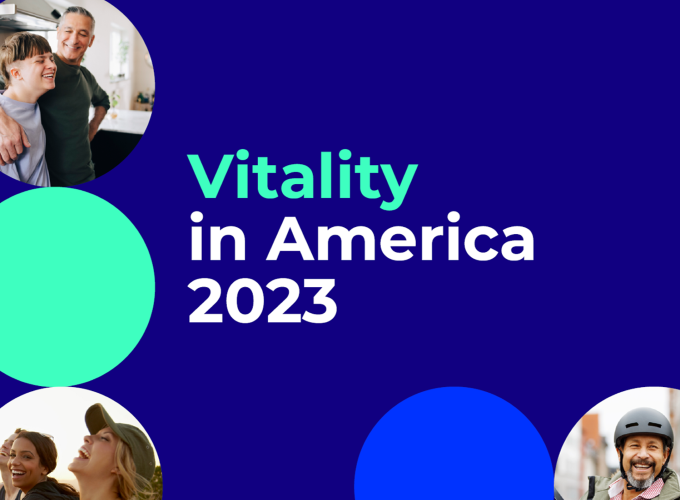
Vitality in America 2023
Take a closer look at this year’s Vitality in America study, and learn how individuals can improve their health, well-being, and vitality, as well as how employers can help their workforces do the same.